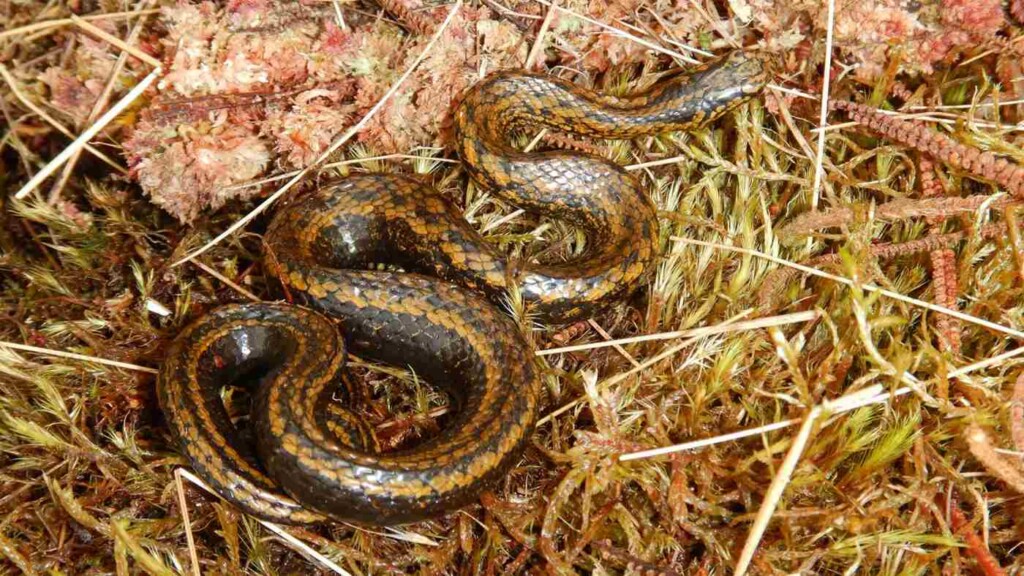
A snake new to science has been named after Harrison Ford in honor of his passionate environmental advocacy and for the matter of a small character he played in a small film series called Indiana Jones.
Tachymenoides harrisonfordi was discovered by German herpetologist Edger Lehr on Peru’s remote Otishi Plateau, an area prowled by narcotraffickers, and the story of its discovery was in itself worthy of a scene in one of Ford’s classic films of the adventurous archaeologist.
One of the least explored grasslands on Earth, Peru’s Otishi National Park lies accessible almost only by helicopter high in the Andes Mountains. The area has been coined “cocaine valley” and Lehr told Conservation.org all about the harrowing brushes with the narcotraffickers that colored the expedition so dangerous that he decided to end it a week ahead of schedule.
“I carried a walkie-talkie so we could communicate if the team was separated,” Lehr recounted. “On the ninth day of the trip, I suddenly heard unfamiliar voices coming through the speaker. We were in this incredibly remote location, so we immediately knew that there were other people around who were using the same radio frequency — channel eight. The voices seemed to hear us, too, and they sounded shocked.”
At times they saw they were being monitored via drone, and discovered footprints around their camp one morning. They heard engine sounds at various intervals, and after discovering a new lizard species and an unmapped waterfall, they called it quits—receiving emergency evacuation by a Peruvian Air Force helicopter.
The reward for their daring and perseverance however was the first official description of Tachymenoides harrisonfordi. The 16-inch-long snake belongs to the family Colubridae, which is one of the largest snake families and made up of almost entirely non-venomous snakes.
For a long time, Colubridae was known as a “wastebasket taxon” where any snake that didn’t fit into the other major snake families was classified. Now however, molecular phylogenics has stabilized the family into a much more sensible organization with 8 sub-families.
MORE NEWS LIKE THIS: He Finally Located Source of Mysterious Sound–A New Frog Species Named After His Rewilding Quest in Costa Rica
With golden scales running down the top of its body, becoming more plentiful near its head, the snake camouflages well with its environment.
While some biologists advocate against giving scientific names after famous people, Lehr says that species can only be protected if they are known, and the species name harrisonfordi will help to draw attention to the value of it and its pristine, albeit dangerous, habitat.

Of course there’s also the irresistable reference to Ford’s famous character’s getaway in the opening scene of Indiana Jones: Raiders of the Lost Ark, where, after narrowly avoiding death by poison blowdart in the jungle, Indy leaps into a seaplane’s cargo hold only to find the pilot’s pet python in the back.
“I hate snakes Jock! I hate ’em!” he says famously.
OTHER SPECIES FOUND RECENTLY: New Species of Owl Discovered on Tiny Island off African Coast – And it was Named After ‘Unflinching’ Park Ranger
“The snake’s got eyes you can drown in, and he spends most of the day sunning himself by a pool of dirty water—we probably would’ve been friends in the early ‘60s,” Harrison Ford said in a statement about the snake. “In all seriousness, this discovery is humbling. It’s a reminder that there’s still so much to learn about our wild world—and that humans are one small part of an impossibly vast biosphere.”
A board member of Conservation International, this in the third animal species named after Ford. An ant and a spider were also given the species name harrisonfordi, but there’s a little something extra about giving it to a snake, even if, in reality, Ford quite likes the slithering reptiles.
SHARE The Awesome Story Of Adventure And Science With Your Friends…



















